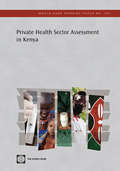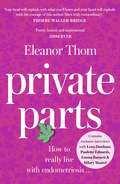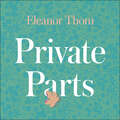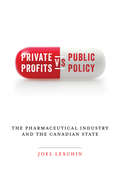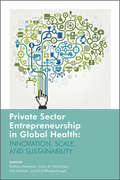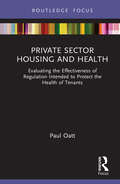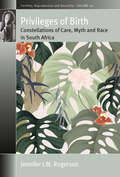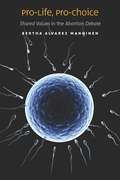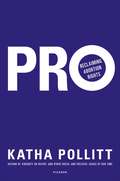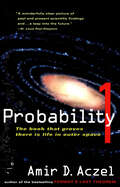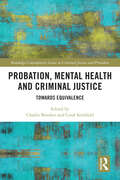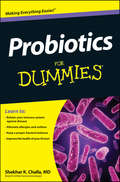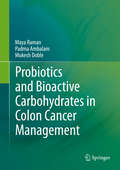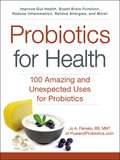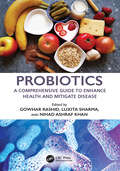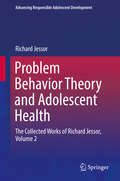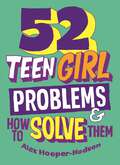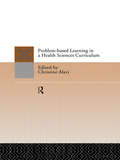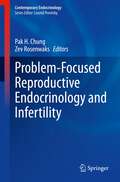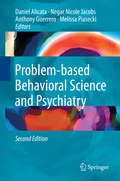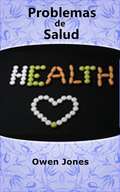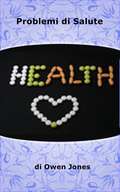- Table View
- List View
Private Health Sector Assessment in Kenya
by Nelson Gitonga Frank Feeley III Jeff Barnes Caytie Decker Barbara O'HanlonThis paper broadly examines the health sector in Kenya, by synthesizing an assessment of the health sector with an analysis of the market. After considering the legal and regulatory framework, the policy enforcement, the human resource capacity, and the financing of health systems, the paper makes recommendations for policy makers.
Private Parts: Living well with bad periods and endometriosis
by Eleanor ThomEleanor Thom is living with endometriosis and she thinks that it's time to talk a bit more about our private parts.Part memoir, part guide book and part survival guide, Private Parts retraces Eleanor's journey with endometriosis, offering readers practical, down-to-earth and friendly advice covering everything from what actually happens in an internal exam to the perfect post-op wardrobe. Eleanor writes as fearlessly as she has fought this disease; with heart, honesty and a humour that is rarely afforded to subjects as serious as this. - Phoebe Waller-BridgePrivate Parts is just like its author: funny, brave, charming, honest, reassuring and ultimately brilliant - Joe LycettWritten for the newly diagnosed as well as those who have had more operations than they can count on one hand, Private Parts is a friend and companion to everyone whose life has been impacted by this little understood condition. It will arm you for your doctors appointments and bring light and laughter in darker times. Features exclusive inspirational interviews with Hilary Mantel, Paulette Edwards, Lena Dunham and Emma Barnett, as well as insights from experts in the field.*A Stylist and Dazed best of 2019 book***As featured in How Do You Cope with Elis + John on BBC Radio 5, available to listen to on BBC Sounds**
Private Parts: Living well with bad periods and endometriosis
by Eleanor ThomEleanor Thom is living with endometriosis and she thinks that it's time to talk a bit more about our private parts.Part memoir, part guide book and part survival guide, Private Parts retraces Eleanor's journey with endometriosis, offering readers practical, down-to-earth and friendly advice covering everything from what actually happens in an internal exam to the perfect post-op wardrobe. Eleanor writes as fearlessly as she has fought this disease; with heart, honesty and a humour that is rarely afforded to subjects as serious as this. - Phoebe Waller-BridgePrivate Parts is just like its author: funny, brave, charming, honest, reassuring and ultimately brilliant - Joe LycettWritten for the newly diagnosed as well as those who have had more operations than they can count on one hand, Private Parts is a friend and companion to everyone whose life has been impacted by this little understood condition. It will arm you for your doctors appointments and bring light and laughter in darker times. Features exclusive inspirational interviews with Hilary Mantel, Paulette Edwards, Lena Dunham and Emma Barnett, as well as insights from experts in the field.*A Stylist and Dazed best of 2019 book***As featured in How Do You Cope with Elis + John on BBC Radio 5, available to listen to on BBC Sounds**
Private Parts: Living well with bad periods and endometriosis
by Eleanor ThomHow to live happily and well with endometriosis, from someone who has tried everything and lived to tell (and laugh at) the tale.What the internet can tell you about endometriosis: Endometriosis is a chronic and incurable condition that affects 1 in 10 women with approximately 1.6 million sufferers in the UK alone, but only 20% of the general public have heard of it. It takes an average of seven and a half years to get a diagnosis in the UK and affects sufferers' capacity to work, their fertility and their ability to enjoy sex. What Eleanor Thom can tell you about endometriosis: You are so much more than the sum of your private parts. Part memoir, part guide book and part survival guide, Private Parts retraces Eleanor's own journey with endometriosis, offering readers practical, down-to-earth and friendly advice covering everything from what actually happens in an internal exam, to finding the right specialist for you, the perfect post-op wardrobe and to why you should look to Frida Kahlo for inspiration in your darkest moments. Written for those looking to live well with their endometriosis and for those who are looking for help to understand the disease and how it affects those with it, Private Parts is a call to action for people to speak up about an illness which is still so misunderstood.(P)2019 Hodder & Stoughton Limited
Private Profits versus Public Policy: The Pharmaceutical Industry and the Canadian State
by Joel LexchinThe widespread condemnation of drastic price increases on life-saving drugs highlights our growing dependency on and vulnerability to international pharmaceutical conglomerates. However, aren't the interests of the public supposed to supersede the pursuit of private profit?In his new work, Private Profits versus Public Policy, Joel Lexchin addresses this question as he examines how public policy with respect to the pharmaceutical industry has evolved in Canada over the past half century. Although the Canadian government is supposed to regulate the industry to serve the needs of public health, waves of deregulatory reforms and intellectual property rights legislation have shifted the balance of power in favour of these companies' quest for profit. Joel Lexchin offers a series of recommendations to tip the scale back in the public's favour. This enlightening work is the first book that deals exclusively with the pharmaceutical industry in Canada in over thirty years.
Private Sector Entrepreneurship in Global Health: Innovation, Scale and Sustainability
by Will Mitchell Kathryn Mossman Anita M. McGahan Onil BhattacharyyaPoor access to care in low- and middle-income countries due to high costs, geographic barriers, and a shortage of trained medical staff has motivated many organizations to rethink their model of health service delivery. Many of these new models are being developed by private sector actors, including non-profits, such as non-governmental organizations, and for-profits, such as social enterprises. By partnering extensively with public sector organizations, these non-state actors have enormous potential to scale innovation in global health. Understanding how these leading organizations operate and target hard-to-reach groups may yield key insights to sustainably improve health care for all. Private Sector Entrepreneurship in Global Health includes writings by management, medicine, and social science experts who have studied trends in private sector health care innovations over the last ten years. It provides a wide range of examples from many regions and health areas and outlines tools to assess the performance of innovative private sector health programs in low- and middle-income countries. The studies reported in this volume explore new marketing and finance models, digital health innovations, and unique organizational processes emerging from the private sector to serve those most in need. Drawing on the analysis of over one thousand organizations engaged in health market innovations, this volume is a valuable resource for researchers and students in management, global health, medicine, development studies, health economics, and anthropology, as well as program managers, social impact investors, funders, and policymakers interested in understanding approaches emerging from the private sector in health care.
Private Sector Housing and Health: Evaluating the Effectiveness of Regulation Intended to Protect the Health of Tenants (Routledge Focus on Environmental Health)
by Paul OattThis book is an evaluation of the effectiveness of housing enforcement and tenant protection in England’s private rented sector using policy analysis to evaluate regulatory provisions and local authority guidance to identify the advantages and limitations of existing policies. From the environmental health practitioner perspective, the targeted health problem is occupiers privately renting from negligent or criminal landlords who are subsequently exposed to hazardous conditions arising from disrepair.Paul Oatt’s analysis looks at the powers local authorities have to address retaliatory eviction when enforcing against housing disrepair and digs deeper into their duties to prevent homelessness and powers to protect tenants from illegal eviction. He then explores the potential for tenants to take private action against landlords over failures to address disrepair, before finally discussing proposals put forward by the government to abolish retaliatory evictions and improve security of tenure with changes to contractual arrangements between landlords and tenants, based on successive stakeholder consultations. The policy analysis looks at these aspects to define the overall effectiveness of housing strategies and their implementation, examining causality, plausibility and intervention logic as well as the unintended effects on the population. Equitability is examined to see where policy effects create inequalities as well as the costs, feasibility and acceptability of policies from landlords' and tenants’ perspectives. The book will be of relevance to professionals interested in housing and health, as well as students at universities that teach courses in environmental health, public health, and housing studies.
Privileges of Birth: Constellations of Care, Myth, and Race in South Africa (Fertility, Reproduction and Sexuality: Social and Cultural Perspectives #44)
by Jennifer J. M. RogersonFocussing ethnographically on private sector maternity care in South Africa, Privileges of Birth attends to the ways healthcare and childbirth are shaped by South Africa’s racialised history. Birth is one of the most medicalised aspects of the life-cycle across all sectors of society and is also deeply divided between what the privileged can afford compared with the rest of the population. Examining the ethics of care in midwife-attended birth, the author situates the argument in the context of a growing literature on care in anthropological and feminist scholarship, offering a unique account of birthing care in the context of elite care services.
Pro-Life, Pro-Choice: Shared Values in the Abortion Debate
by Bertha Alvarez ManninenIn this provocative and accessible book, the author defends a pro-choice perspective but also takes seriously pro-life concerns about the moral value of the human fetus, questioning whether a fetus is nothing more than "mere tissue." She examines the legal status of the fetus in the recent Personhood Amendments in state legislatures and in Supreme Court decisions and asks whether Roe v. Wade should have focused on the viability of the fetus or on the bodily integrity of the woman. Manninen approaches the abortion controversy through a variety of perspectives and ethical frameworks. She addresses the social circumstances that influence many women's decision to abort and considers whether we believe that there are good and bad reasons to abort. Manninen also looks at the call for post-abortion fetal grieving rituals for women who desire them and the attempt to make room in the pro-choice position for the views of prospective fathers. The author spells out how the two sides demonize each other and proposes ways to find degrees of convergence between the seemingly intractable positions.
Pro-Life, Pro-Choice: Shared Values in the Abortion Debate
by Bertha ManninenIn this provocative and accessible book, the author defends a pro-choice perspective but also takes seriously pro-life concerns about the moral value of the human fetus, questioning whether a fetus is nothing more than "mere tissue." She examines the legal status of the fetus in the recent Personhood Amendments in state legislatures and in Supreme Court decisions and asks whether Roe v. Wade should have focused on the viability of the fetus or on the bodily integrity of the woman. Manninen approaches the abortion controversy through a variety of perspectives and ethical frameworks. She addresses the social circumstances that influence many women's decision to abort and considers whether we believe that there are good and bad reasons to abort. Manninen also looks at the call for post-abortion fetal grieving rituals for women who desire them and the attempt to make room in the pro-choice position for the views of prospective fathers. The author spells out how the two sides demonize each other and proposes ways to find degrees of convergence between the seemingly intractable positions.
Pro: Reclaiming Abortion Rights
by Katha PollittA powerful argument for abortion as a moral right and social good by a noted feminist and longtime columnist for the nation. Forty years after the landmark Roe v. Wade ruling, "abortion" is still a word that is said with outright hostility by many, despite the fact that one in three American women will have terminated at least one pregnancy by menopause. Even those who support a woman's right to an abortion often qualify their support by saying abortion is a "bad thing," an "agonizing decision," making the medical procedure so remote and radioactive that it takes it out of the world of the everyday, turning an act that is normal and necessary into something shameful and secretive. Meanwhile, with each passing day, the rights upheld by the Supreme Court are being systematically eroded by state laws designed to end abortion outright. In this urgent, controversial book, Katha Pollitt reframes abortion as a common part of a woman's reproductive life, one that should be accepted as a moral right with positive social implications. In Pro, Pollitt takes on the personhood argument, reaffirms the priority of a woman's life and health, and discusses why terminating a pregnancy can be a force for good for women, families, and society. It is time, Pollitt argues, that we reclaim the lives and the rights of women and mothers.
Proactive Support of Labor
by Paul Paul Reuwer Hein Bruinse Arie Franx Reuwer Bruinse Hein Franx ArieProactive Support of Labor enhances professional labor and delivery skills by providing the expertise for preventing prolonged labor which is the root-cause of women's dissatisfaction with the experience of childbirth. Step-by-step, evidence-based guidance on good practice during labor is given, including fetal and maternal monitoring, pain relief, and the prevention and timely correction of everyday labor disorders. It leaves no aspect of childbirth practice untouched. Included are guidance on adequate pre-labor education, psychological support, and well-defined birth-planning - including strict diagnoses and timely corrective measures in abnormal labor, and constant audit of all procedures. The birth-plan promotes team spirit between obstetricians, midwives and nurses, good communication, and sound organization. Proactive Support of Labor strikes a new balance between natural birth and intervention and invariably enhances women's satisfaction with the childbirth experience. The book will be essential reading for obstetricians, midwives, labor room nurses, and maternal-fetal medicine specialists and trainees.
Probability 1
by D. AczelFor thousands of years, it was the visionaries and writers who argued that we cannot be alone-that there is intellegent life in the universe. Now, with the discoveries of the Hubble Telescope, data emerging from Mars, and knowledge about life at the extremes, scientists are taking up where they left off. Amir Aczel, author of Fermat's Last Theorem, pulls together everyting science has discovered, and mixes in proabability theory, to argure the case for the existence of intelligent life beyond this planet. Probability 1 is an extraordinary tour de force in which the author draws on cosmology, math, and biology to tell the rollicking good story of scientists tackling important scientific questions that help answer this fundamental question. What is the probability of intelligent life in the universe? Read this book, and you'll be convinced, by the power of the argument and the excitement of the science.
Probation, Mental Health and Criminal Justice: Towards Equivalence (Routledge Contemporary Issues in Criminal Justice and Procedure)
by Charlie Brooker and Coral SirdifieldThis collection of research and evaluation explores issues in mental health and probation across the globe. The volume offers insight into a wide range of interrelated topics that address the mental health and mental health needs of those under probation supervision. The chapters embrace a range of diverse mental health concerns. The underpinning assumption is that offenders should receive mental healthcare that is ‘equivalent’ to that received by the general population where this is appropriate. This overview is informed by perspectives from academics and practitioners based in England and the Republic of Ireland, and also includes the views of people with lived experience of the criminal justice system. Building upon and adding to the existing literature in this field, the book will be a valuable resource for academics and researchers as well as those training to work in, and currently working in, the criminal justice and mental health field, and would also be of interest to those working in related healthcare settings.
Probiotics For Dummies
by Eamonn M. Quigley Shekhar ChallaDiscover the pros of probioticsProbiotics are beneficial, live microorganisms (in most cases, bacteria) that are similar to those found naturally in the human intestine. Also known as "friendly" or "good" bacteria, probiotics are the cornerstone of any successful health program because they restore a healthy balance between friendly and bad bacteria in the intestinal tract, a balance that is critical for the health of the entire body. Probiotics are associated with treating everything from IBS to certain forms of cancer, allergies, eczema, and even the effects of aging.Probiotics For Dummies reveals how taking the right probiotics--in the form of food and supplements-- as part of a total health program benefits one's overall health, as well as improving specific conditions. This hands-on, essential guide features 20 probiotic recipes and gives you a step-by-step plan for infusing probiotics into your diet to improve the health of the GI tract, alleviate allergies and asthma, restore reproductive and urinary tracts, bolster the immune system against disease, enhance weight loss, and more. Advice on how to ingest the right probiotics20 probiotic recipes from breakfast to dessertInformation on naturally occurring probiotic compounds as well as the effectiveness of supplementsProbiotics For Dummies gives you everything you need to make informed decisions about adding probiotics to your daily diet.
Probiotics and Bioactive Carbohydrates in Colon Cancer Management
by Mukesh Doble Maya Raman Padma AmbalamThis book describes the dietary habits (such as use of probiotics, synbiotics, prebiotics and dietary fiber) that could modify and reduce the risk of developing colorectal cancer (CRC). The book will be of practical and scientific use to academicians, research scholars, students, health professionals, nutritionists, etc. and could support the cause of preventing CRC by adopting smarter food habits. CRC is the third leading cause of death, in terms of both incidence and mortality, among men and women. Excess consumption of red and processed meat, roasted coffee, etc. have shown an increase in CRC, indicating that compounds formed in food containing free amino acids and sugars interact at elevated temperatures to form mutagens or carcinogens. Standard treatment options for CRC include invasive surgery and chemotherapy or radiation. Several lifestyle and dietary factors could prevent this ailment. Probiotics, prebiotics and synbiotics that are found in functional foods, health supplements and nutraceuticals and short chain fatty acids that are formed in the colon as a result of microbial fermentation of undigested bioactive carbohydrates by Bifidobacterium and Lactobacillus inhibit colonic epithelial cells and minimize inflammation, thereby exhibiting immunomodulatory effects. This book tries to address the novel unexplored benefits and mechanism of action of these functional foods.
Probiotics for Health: 100 Amazing and Unexpected Uses for Probiotics
by Jo A. PanykoDiscover the many ways probiotics can transform your health, beauty, and overall wellness in this informative new guide.Probiotics—good bacteria found in fermented foods and supplements—are the newest health craze, and for good reason. Recent medical studies continue to reveal how probiotics improve gut health and contribute to overall wellness. Their antimicrobial and anti-inflammatory properties can help combat chronic disease, including heart disease, certain types of cancers, and irritable bowel syndrome. They also provide all-natural relief for common ailments like allergies, flu, colds, urinary tract infections, and yeast infections. They are also effective beauty aids, and can be used for many things from fighting acne to healing dandruff. With Probiotics for Health, you will discover all the benefits that these good bacteria can bring from weight loss to better skin to a better immune system—without dangerous chemicals or costly procedures.
Probiotics: A Comprehensive Guide to Enhance Health and Mitigate Disease
by Gowhar Rashid Luxita Sharma Nihad Ashraf KhanProbiotics: A Comprehensive Guide to Enhance Health and Mitigate Disease is an indispensable resource for a deeper understanding of the intricate world of probiotics and their profound impact on human health. This book unravels the complex science behind probiotics, providing a comprehensive exploration of their roles in maintaining a healthy microbiome, fortifying the immune system, and mitigating various diseases. It presents insights into how probiotics influence not only digestive health but also extend their benefits to systemic well-being.The book provides practical guidance, offering evidence-based recommendations for selecting and incorporating probiotics into daily life. From decoding probiotic strains and understanding their mechanisms of action to exploring the symbiotic relationship between gut health and overall wellness, this resource is for both beginners and seasoned enthusiasts in the field. With a focus on demystifying the often-confusing landscape of probiotics, the book empowers the reader to make informed choices to optimize their health.Probiotics: A Comprehensive Guide to Enhance Health and Mitigate Disease is an essential reference for healthcare professionals, researchers, and individuals keen on harnessing the potential of probiotics for their well-being. Whether you are a healthcare practitioner looking to enhance patient care or a health-conscious reader eager to navigate the world of probiotics, this guide is a valuable asset that bridges the gap between cutting-edge science and practical application.
Problem Behavior Theory and Adolescent Health
by Richard JessorThis second volume of Richard Jessor's influential works applies his groundbreaking theory to illuminating the psychosocial determinants of adolescent health. Focusing on a range of both health-compromising and health-enhancing behaviors, including problem drinking, marijuana use, risky driving, and early sexual experience as well as regular exercise and healthy diet, these writings advance understanding of the role of health behavior in adolescence and adolescent development. Chapters illustrate the relevance of the theory and of its interdisciplinary approach for research on behavioral health in adolescence and for the design of prevention/intervention programs to promote healthy development. In addition, the book's comparative studies of U. S. and Chinese youth reveal the generality of the theory across societal and national differences. Topics featured in this book include: Alcohol use and problem drinking in adolescent health and development. Psychosocial research on marijuana use. Understanding early initiation of sexual intercourse in adolescence. Smoking behavior in adolescence and young adulthood. Developmental change in risky driving. Healthy eating and regular exercise in adolescent health and development Problem Behavior Theory and Adolescent Health is a must-have resource for researchers, professors, clinicians, and related professionals as well as graduate students in developmental and health psychology, sociology, criminology, criminal justice, public health, and related disciplines.
Problem Solved: 52 Teen Girl Problems & How To Solve Them
by Alex Hooper-HodsonAgony Uncle, relationship expert, journalist and blogger, Alex Hooper-Hodson received upwards of 2,000 letters a month from teen boys and girls aged 12-16. All can be related to 52 core issues that affect teenage boys and girls today - from first sexual relationships, dealing with unwanted sexual attention, how to avoid Facebook mistakes, how drink, drugs and online gaming can affect your life - to the social and emotional aspects of family, friends and relationships. Through a 'Problem Page' format Alex explores the key issues that today's teens face.
Problem-Based Learning in a Health Sciences Curriculum
by Christine AlaviProblem-based learning places the student at the centre of a process which integrates what is learned in a lecture with what the student actually experiences in practice. The authors of this book use their experience of designing and implementing such a course to offer detailed examples of strategies that work, and show how the approach can be adapted to individual curriculum needs. Including key chapters on facilitation, clinical practice, assessment and evaluation, Problem-Based Learning in a Health Sciences Curriculum will be inspiring reading for all those who want to explore and extend their teaching methods and motivate their students to acquire real knowledge with enjoyment.
Problem-Focused Reproductive Endocrinology and Infertility (Contemporary Endocrinology)
by Zev Rosenwaks Pak H. ChungIn the vast majority of books discussing reproductive endocrinology and infertility (REI), the contents are organized and classified by organs and systems. In contrast, this book is problem-based: chapters are sensibly arranged according to the chief complaints from patients presenting at the office. Readers will be guided to formulate the differential diagnoses, select the appropriate evaluation scheme to arrive at the correct diagnosis, and finally decide on the recommended treatment for the particular condition. The range of both male and female REI conditions are presented here, providing the clinician with the tools to sort through the numerous and often similar complaints from patients to reach the best treatment strategy. Discussed here are issues of puberty, menstrual conditions, uterine anomalies, fibroids, endometriosis, male and female infertility, pregnancy loss, menopause and many others. Current diagnostic and treatment guidelines and algorithms for all conditions are included, further streamlining the management process. Written by experts from the Ronald O. Perelman and Claudia Cohen Center of Reproductive Medicine at Weill Medical College of Cornell University, a world-renowned group of reproductive physicians, Problem-Focused Reproductive Endocrinology and Infertility is an indispensable resource for office-based management of REI conditions.
Problem-based Behavioral Science and Psychiatry
by Daniel Alicata Negar Jacobs Anthony Guerrero Melissa PiaseckiIn keeping with the growing emphasis on psychiatry in the medical school curriculum, problem-based learning (PBL) offers students a unique patient-centred, multidisciplinary approach to study and the synthesis of knowledge. The new 2nd edition of Problem-Based Behavioral Science and Psychiatry integrates DSM-5 updates and diagnostic criteria, and is fully consistent with PBL models and methods. Building on the strengths of the popular and widely downloaded 1st edition, the 2nd edition is a clinically robust resource for both the medical and the behavioral science student. Over 40 contributors, many themselves graduates of PBL medical schools, apply problem-based learning methods to specific psychiatric disorders, general clinical issues, and bedrock physician skills such as the intake interview and treatment planning. The book's fictional case vignettes illustrated typical patient scenarios, providing real-world context for content areas, and accompanying case diagrams show the relationships between patient behaviour and underlying neurobiological structures. Each student-friendly section ends with helpful review questions. A sampling of the content areas covered: · Childhood development and brain development. · Major psychiatric illnesses, including personality, mood, anxiety, and psychotic disorders. · Stress, substance abuse, and violence. · Eating, sleep, and sexual disorders. · Coping skills and treatment compliance. · End-of-life care. · PLUS chapters on cultural sensitivity, ethical concerns, and the physician/patient relationship. This book is ideal for first and second year medical students wanting to learn about psychiatry in the exciting context of realistic cases. It also makes an excellent prep/review text for third- and fourth-year medical students preparing for the USMLE Step 1 and 2 exams, as well as being suited to graduate students in psychology or clinical social work. Problem-Based Behavioral Science and Psychiatry encourages lifelong learning and helps build the foundation for a lifelong career.
Problemas de salud (Como hacer... #66)
by Owen JonesSaludos y gracias por comprar este libro digital titulado Problemas de Salud. Espero que la información que contiene te sea útil y provechosa. La información que encontrarás en este libro digital se centra en varios aspectos relacionados con la salud y el estado físico y está organizada en 18 capítulos de aproximadamente 500-600 palabras. Espero que le resulte de interés a quienes les preocupa mantener una buena salud y apariencia. Como un plus, autorizo a que uses el contenido de este libro en tus propios sitios web, blogs y boletines informativos, aunque es mejor que primero lo parafrasees. También podrás dividir el libro y revender los artículos por separado. De hecho, lo único que no está permitido es la reventa o la cesión del presente libro tal cual se ha recibido. Si tienes algún comentario, comunícate con la empresa que te vendió el libro. Una vez más, muchas gracias por adquirir este libro digital, Saludos cordiales, Owen Jones
Problemi di Salute (Come fare... #66)
by Owen JonesProblemi di Salute Ciao e grazie per aver acquistato questo ebook chiamato Problemi di Salute. Spero tu possa trovare le informazioni utili e convenienti, e che queste ti siano d’aiuto. Le informazioni in questo ebook sui vari aspetti del tenersi in salute, avere un buon aspetto ed altri argomenti correlati sono organizzate in 14 capitoli di circa 500-600 parole l’uno. Spero che possa catturare l’interesse di coloro che si preoccupano della loro forma e apparenza fisica. Come bonus aggiuntivo, ti do il permesso di utilizzare questo contenuto sul tuo sito web, o nel tuo blog personale e newsletter, anche se è meglio che tu lo riscriva prima a parole tue. Potresti anche dividere il libro e rivenderne i diversi articoli. In pratica l’unico diritto che non hai è quello di rivendere il libro cosi come ti è stato consegnato. Se hai qualche feedback, sei pregato di rivolgerti alla compagnia dalla quale hai comprato il libro. Puoi trovare piu libri come questo sulla piattaforma dove l'hai acquistato. Ancora grazie per aver acquistato questo ebook, Saluti, Owen Jones
